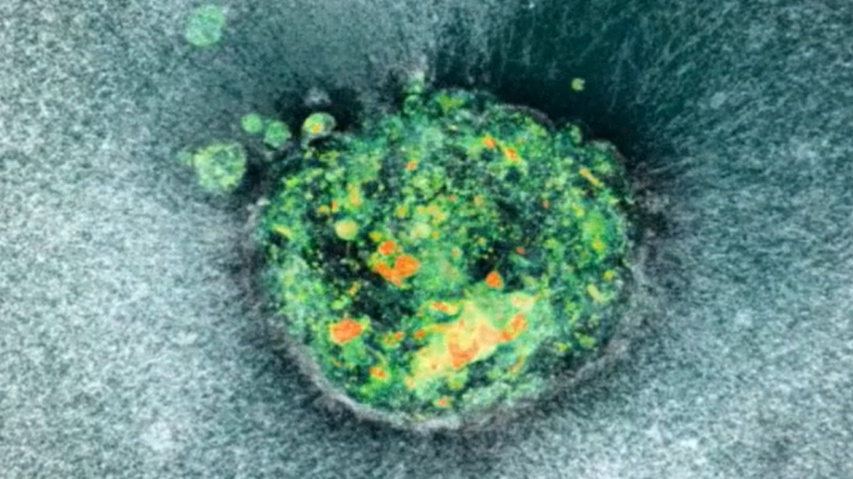Science
Researchers Visualize Human Embryo Implantation in Real Time

A team of researchers at the Institute for Bioengineering of Catalonia (IBEC) has achieved a significant breakthrough by visualizing human embryo implantation in real time. This innovative study addresses a critical aspect of human reproduction, where less than one-third of conceptions lead to live births, primarily due to the failure of embryos to implant in the uterus.
Historically, understanding this implantation process has been challenging, as recording it in vivo has not been possible. The researchers developed an ex vivo platform that simulates the outer layers of the uterus, allowing them to observe the dynamics of embryo implantation in a laboratory setting. This advancement could potentially lead to improved fertility rates and enhanced assisted reproductive technologies.
Innovative Approach to Studying Implantation
At its earliest stage, a human embryo is a small ball of cells known as a blastocyst. Approximately six days after fertilization, the blastocyst begins to embed itself into the uterine walls. The newly designed platform by the IBEC team allows for the examination of the mechanical forces exerted by the embryo during this crucial phase. Unlike previous studies focusing predominantly on biochemical and genetic factors, this approach sheds light on the physical interactions involved in implantation.
The researchers created two configurations for their study: a two-dimensional (2D) platform where blastocysts settle on a flat gel, and a three-dimensional (3D) version where the embryos are placed within collagen drops. This setup incorporates a collagen gel to mimic the extracellular matrix found in vivo, along with globulin-rich proteins essential for embryo development.
To capture the dynamics of the blastocyst implantation, the team employed time-lapse imaging techniques, including fluorescence imaging and traction force microscopy. These methods allowed them to visualize the matrix fibers and their deformations, providing insights into how the embryo interacts with the uterine environment.
Key Findings on Embryo Dynamics
The results from the 2D platform showed that 72% of human blastocysts successfully attached and integrated into the collagen matrix, with an invasion depth reaching up to 200 μm. Notably, the embryos maintained their spherical shape and increased in size without spreading across the surface. In the 3D configuration, an impressive 80% of the embryos survived and invaded the matrix. Both setups demonstrated that the blastocysts exhibited motility within the matrix, highlighting their invasion capabilities.
The research team also monitored the traction forces exerted by the embryos on the collagen matrix. They observed that the displacement of the matrix increased over time, indicating a pulsatile behavior that may help embryos continuously sense their surroundings.
Samuel Ojosnegros, the study leader, emphasized the significance of these findings, stating, “We have observed that human embryos burrow into the uterus, exerting considerable force during the process. These forces are necessary because the embryos must be able to invade the uterine tissue, becoming completely integrated with it.” He noted that while many women experience abdominal pain and slight bleeding during implantation, this invasive process had never been directly observed before.
The researchers compared their findings to the implantation of mouse blastocysts, which exhibited a limited surface outgrowth in contrast to the complete integration seen in human embryos. Both species demonstrated strong pulling forces during implantation, remodelling the collagen matrix and aligning fibers around the embryos.
The team plans to incorporate a theoretical framework to further understand the mechanics of implantation. Amélie Godeau, co-first author of the study, stated, “Our observations at earlier stages show that attachment is a limiting factor at the onset of human embryo implantation. Our next step is to identify the key elements that enable a successful initial connection between the embryo and the matrix.”
The study is detailed in the journal Science Advances, marking a pivotal step towards understanding the complexities of human reproduction and potential interventions for fertility issues.
-

 Health3 months ago
Health3 months agoNeurologist Warns Excessive Use of Supplements Can Harm Brain
-

 Health3 months ago
Health3 months agoFiona Phillips’ Husband Shares Heartfelt Update on Her Alzheimer’s Journey
-

 Science1 month ago
Science1 month agoBrian Cox Addresses Claims of Alien Probe in 3I/ATLAS Discovery
-

 Science1 month ago
Science1 month agoNASA Investigates Unusual Comet 3I/ATLAS; New Findings Emerge
-

 Science4 weeks ago
Science4 weeks agoScientists Examine 3I/ATLAS: Alien Artifact or Cosmic Oddity?
-

 Entertainment4 months ago
Entertainment4 months agoKerry Katona Discusses Future Baby Plans and Brian McFadden’s Wedding
-

 Science4 weeks ago
Science4 weeks agoNASA Investigates Speedy Object 3I/ATLAS, Sparking Speculation
-

 Entertainment4 months ago
Entertainment4 months agoEmmerdale Faces Tension as Dylan and April’s Lives Hang in the Balance
-

 World3 months ago
World3 months agoCole Palmer’s Cryptic Message to Kobbie Mainoo Following Loan Talks
-

 Science4 weeks ago
Science4 weeks agoNASA Scientists Explore Origins of 3I/ATLAS, a Fast-Moving Visitor
-

 Entertainment4 months ago
Entertainment4 months agoLove Island Star Toni Laite’s Mother Expresses Disappointment Over Coupling Decision
-

 Entertainment3 months ago
Entertainment3 months agoMajor Cast Changes at Coronation Street: Exits and Returns in 2025









